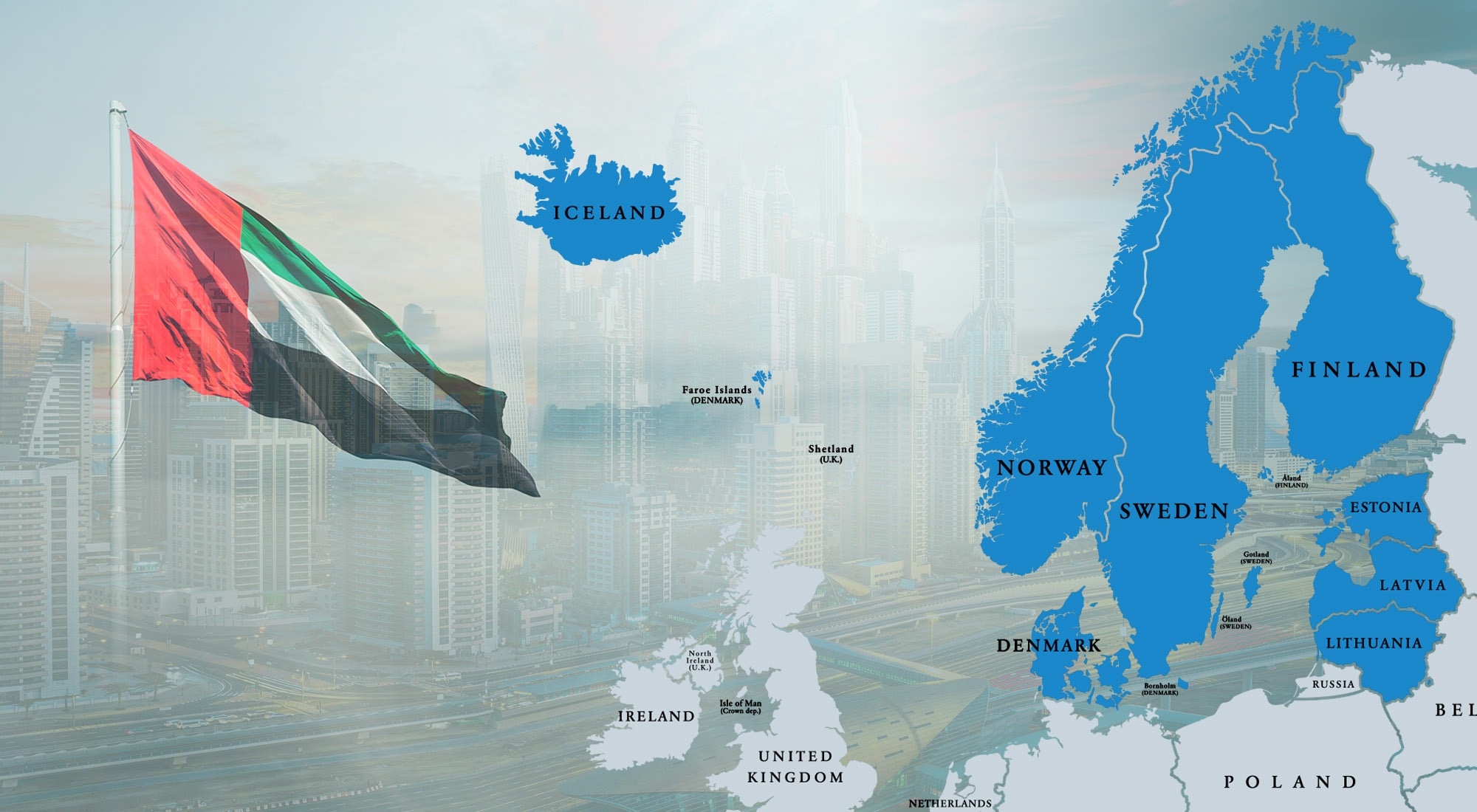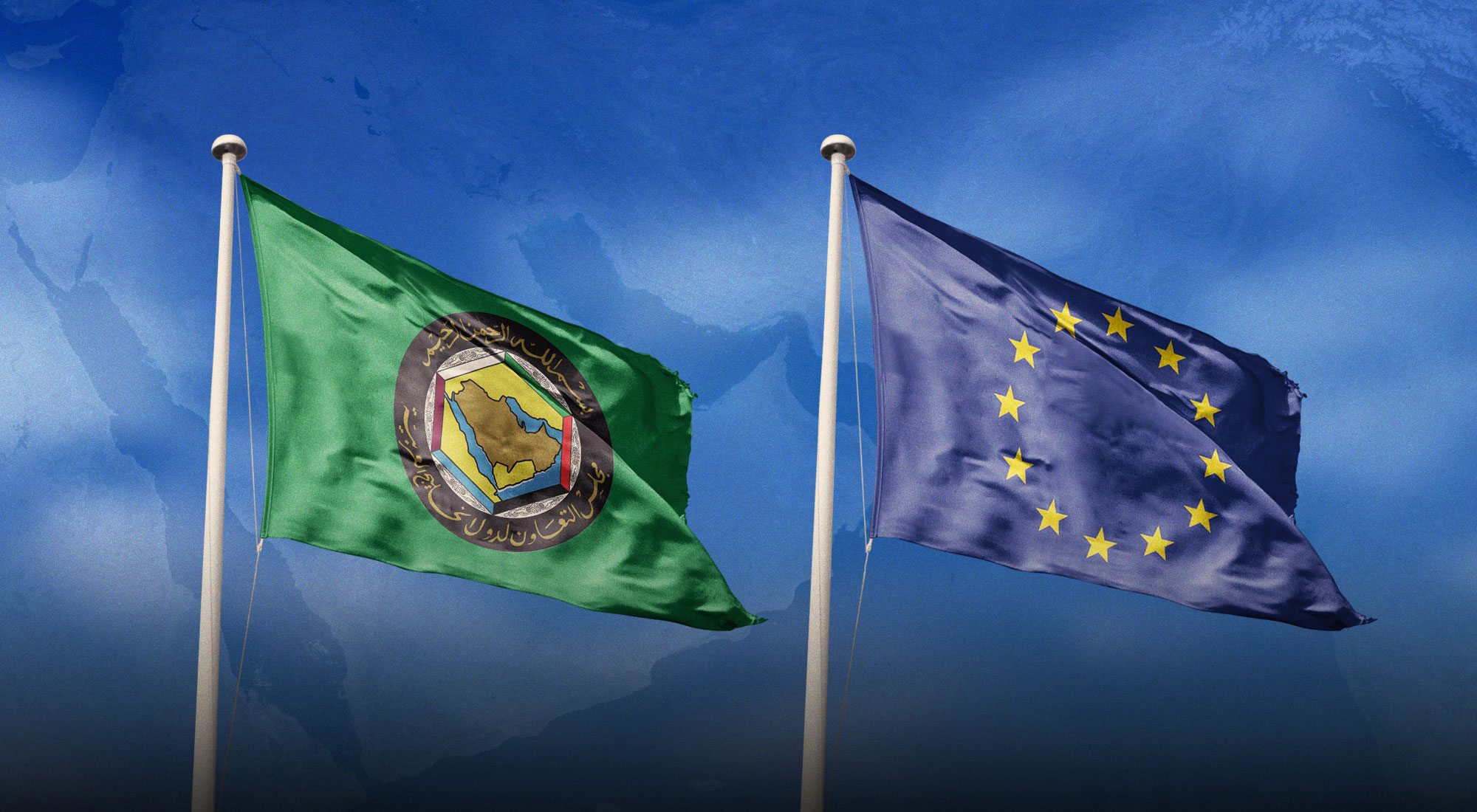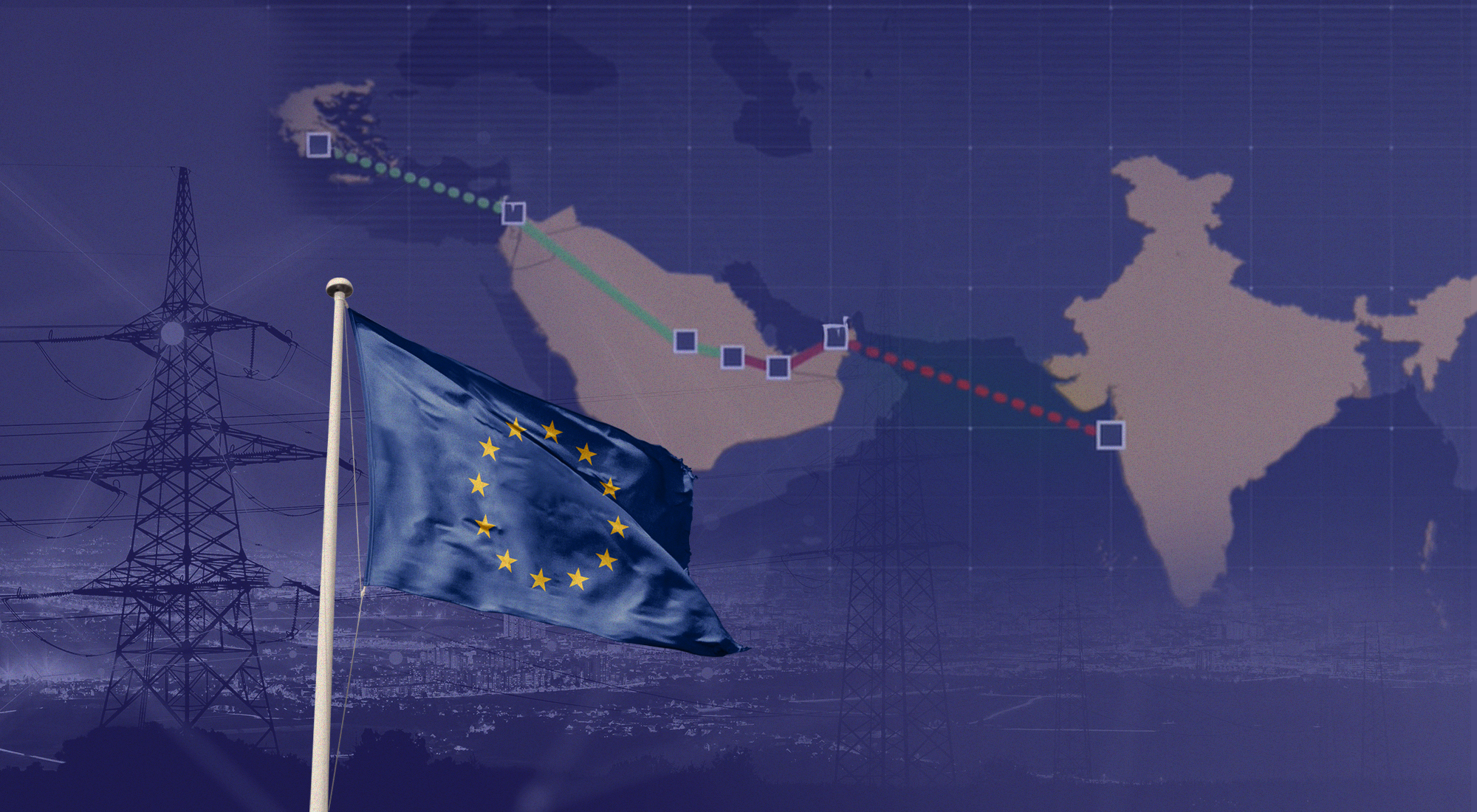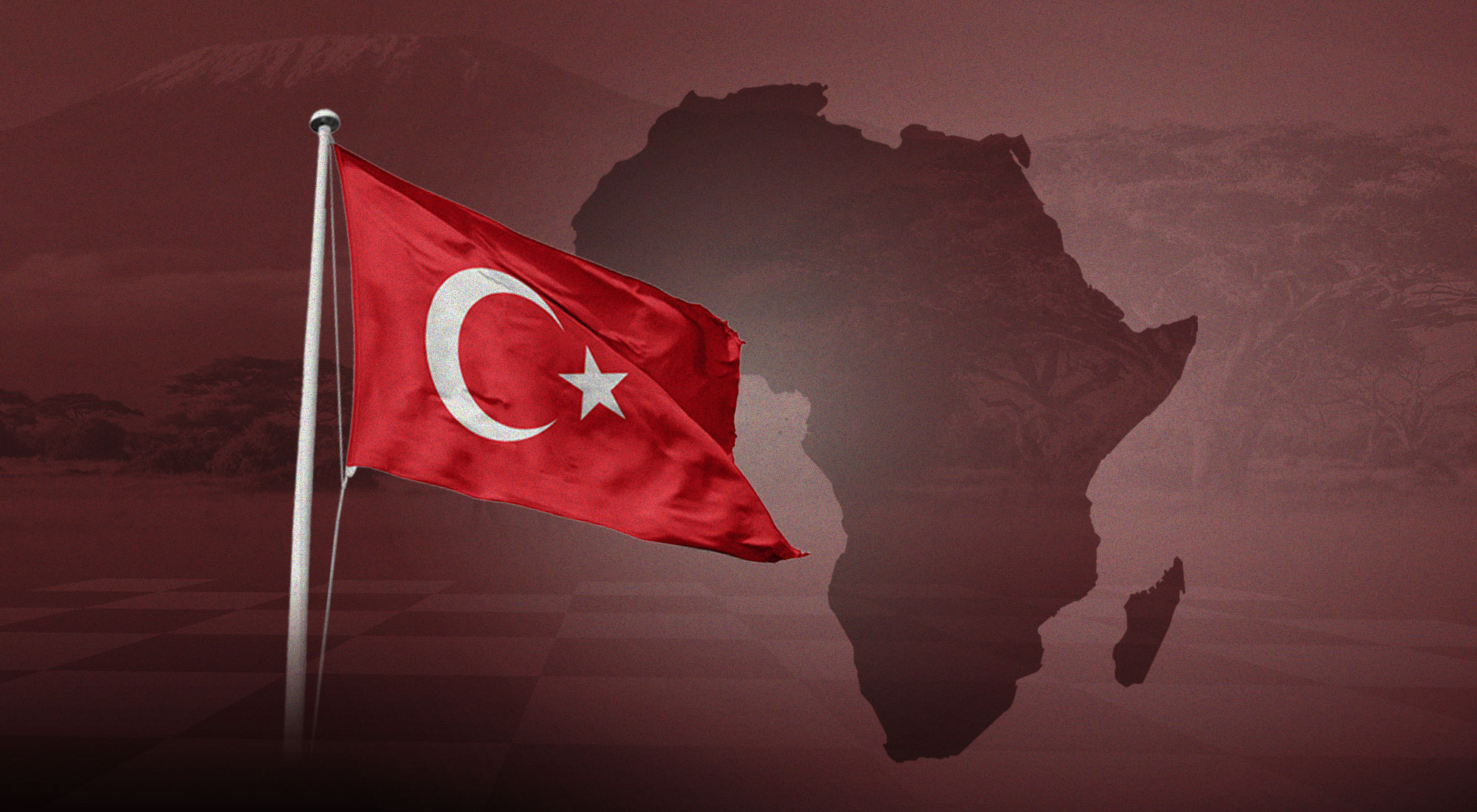Situated in a strategically pivotal part of the world, occupying a small landmass, and home to a relatively large population of expats, the UAE has been both blessed with and cursed by geography. Gaining its nationhood in its current federal structure through protracted negotiations with a retracting major power – Britain – and rising to prosperity via a tactful utilization of its logistic and trading credentials, Emirati officials have grown accustomed to both taking the long view in their strategic deliberations and employing all instruments of influence – soft and hard, strategic and commercial – in their pursuit of national interests. This is why strategic decision making in the UAE has traditionally relied on close defence and security ties with Western powers, flexibility towards neighboring nations, and a steadfast adherence to humanitarianism in the Arab world[1] and, more recently, Africa.
To these, one could convincingly add strategic diversification, evident in the UAE’s flourishing relations with rising Asian powers such as China, India and South Korea, and smart utilization of state-led capitalism,[2] whereby financial investment and capacity building initiatives by the private sector have enabled the tiny Gulf state to deterritorialize its interests and influence in regions beyond its immediate neighborhood. Finally, strategic decision making, and foreign policy more broadly, has also been of service to the UAE leadership’s drive towards the construction of a unique Emirati national identity[3] as a modern, technologically advanced, and respected Arab nation. The UAE’s space program and drive towards technological supremacy in AI, cyberspace, and the production of semiconductors,[4] as well as its efforts at pioneering green and/or sustainable economic development in collaboration with its partners and allies, are all part and parcel of a concerted effort at national identity building by the country’s top leadership.
As the global order undergoes seismic changes, and climate change and technological innovations make the Arctic both more accessible and attractive,[5] news of Dubai-based DP World’s foray into the region, via a commercial deal with Rosatom, ought not to come as a surprise.[6] This comes in line with the dynamics of the UAE’s foreign policy making. As Arctic sea routes remain open for longer periods of time and cargo traffic between Asia and Europe/North America via its waterways increase, it is only reasonable for a maritime nation, and an important global logistic hub, like the UAE to exert itself into the region. Add to this the region’s enormous commercial potentials and close Abu Dhabi-Moscow relations. Given the inadequacy of the current infrastructure in the resource-rich Arctic zone of Russia, the significance of the region to Moscow’s future commercial and strategic plans, and the potential of the Northern Sea Route as a maritime shortcut between key Western and Eastern markets, DP World’s entry has both (geo)political and commercial benefits.
Considering the UAE’s appetite for diversification in its strategic policy-making, this article posits that it is in the UAE government’s best interests to proactively engage with the Scandinavian states of the Arctic – namely, Denmark, Finland, Norway, and Sweden – in its efforts to establish a foothold in the High North. As sensitivities surrounding commercial ties with Moscow continue to run high among certain UAE allies in the West, the Emirati government would be better able to serve its national interests, and avoid unnecessary scrutiny, by forging closer ties with the four Northern European nations. Most importantly, aside from the fact that the UAE shares a number of common interests with these countries, its expertise and/or strengths in sectors like tourism could benefit the quadrate’s efforts at developing their own respective Arctic regions.
Why the Arctic matters
As global warming and technological innovations converge, the polar region has become much more accessible; a trend that is set to accelerate in the years ahead. The rising global temperature directly translates into longer open water seasons in the Arctic, while advancements in satellite technologies, communication, remote sensing, and the shipping industry have collectively made the region’s maritime routes more navigable. As a result, there has been a marked increase in the number of tourists visiting the region while more mining and energy companies are rushing to set up operations in the Arctic. This opening, moreover, has made the once sleepy region a hot-bed for commercial exploration and geopolitical contestation thanks to the region’s vast yet untapped resources. Home to large deposits of oil and gas,[7] the Arctic is also endowed with considerable deposits of critical minerals,[8] deemed essential for the industries and sectors commonly associated with the Fourth Industrial Revolution. Meanwhile, its slowly opening sea lanes represent nothing short of a maritime shortcut to the vibrant markets of the East and West; a trend that is commonly associated with accelerated trade and cheaper transport costs.
Furthermore, thanks to this maritime opening, an increasing number of states, including the eight regional states as well as a number of non-Arctic states – such as China, France, South Korea, and the UK – have started laying telecommunication cables underneath the Arctic Ocean in an effort to increase the speed and security of data transfer across America, Asia, and Europe.[9] As these works roll out and maritime traffic increases in volume, one can also be certain that demands for maritime capacity building and infrastructural development along regional sea lanes will also expand exponentially, while an increased number of tourists flocking into the Arctic would make the tourism industry a profitable one in the years to come.
Furthermore, the region’s pristine environment, crisp air, and vast landmass collectively make it an attractive location for hosting data centres[10] and, perhaps even more importantly, aerospace and telecommunication industries,[11] while its geographical proximity to Russia, the US, and Western Europe makes it an area of geopolitical contestation among major global powers. Last but not least, the Arctic is deemed critical to global food security; yet another trait that is set to grow in importance in the coming years as global warming makes large swathes of its landmass, especially in the Russian and Canadian zones, more arable.[12] In other words, the Arctic matters because it could become a global sweet spot for farming.
It is therefore no wonder why interest in the region is on the rise globally, with a growing number of states adamant to develop their legal, normative and material credentials for a sustained and engaged presence in the Arctic. Such presence would bring with it commercial, scientific, and indeed strategic, benefits and it is only a matter of time before more states seek to acquire observer status at the Arctic Council – or whatever its successor institution may be (since most of its activities have been paused due to the ongoing war in Ukraine).[13]
Why work with Denmark, Finland, Norway and Sweden?
Seeking to forge a close working relationship with the four Scandinavian states can be justified on three separate, yet loosely intertwined, accounts. First, doing so represents sound statesmanship in that it enables Abu Dhabi to avoid over-reliance on any one particular nation in pursuing its interests in the High North. It also deters the prospect of emerging perceptions in some Western capitals of a looming Emirati-Russian partnership, which could jeopardize, among other things, the stream of foreign direct investment into the UAE. More fundamentally, working with the Scandinavian members of the Arctic Council would better suit the UAE’s purported efforts at “nation branding”[14] on the global stage, while further empowering its drive towards becoming a “nexus state”[15] and enabler and facilitator of global trade. In this way, it could also take a significant leap towards its broader goal of becoming a global pivot state cable of “interact(ing) with multiple great powers on multiple levels.”[16]
Second, there is an interesting synergy of sectoral interests between the UAE and the four Nordic states, which could, and should be, explored in order to catalyze sustained cooperation between them. Denmark,[17] Finland,[18] Norway,[19] and Sweden[20] all attach significance to the tourism potential of the Arctic and have already put in place detailed plans for the tourism infrastructure development of their respective Arctic regions, though no specific timeline has yet been set. From building resorts and hotels to constructing ports and developing faster modes of transport, their drive towards the expansion of the region’s tourism sector is anchored in a common projection and/or expectation that increased accessibility will drive up the number of visitors to the region. These plans would not only provide Emirati private actors with attractive investment opportunities, but would also benefit relevant authorities and entities in the UAE through both knowledge transfer and partnerships with their Scandinavian counterparts in eco-tourism and sustainable development.
Developing the Arctic’s resource and energy sectors are also ranked highly in the Arctic strategy documents of all four Northern European countries. This ought not to be surprising given the region’s vast deposits of oil, gas, and strategic minerals and its potential for generating renewable energies.[21] What is unique about their efforts, however, is that they plan to make full use of renewables by making small communities and towns energy self-sufficient, while also investing in the development of green mining technologies and ‘cleaner’ extraction methods. These efforts are crucial if they are to benefit from the Arctic’s resources and energy potentials without damaging its unique environment. To this end, Sweden has already begun production of carbon free iron ore[22] while Norway[23] and Denmark[24] have both invested heavily in the development of green extractive technologies. By working with these countries and forging close ties with relevant academic and research institutes – such as the Technical University of Denmark (DTU) or Norway’s UiT working with Abu Dhabi’s Petroleum Institute – the UAE can benefit immensely from these countries’ know-how in its own efforts to become the regional leader in sustainable development, the production and use of renewable energies, and the greening of extractive industries.
Healthcare provides yet another route for expanded cooperation between the UAE and the Nordic nations in the Arctic. Improving diet to tackle diabetes and obesity, increasing the number of physically active people, and reducing smoking and harmful alcohol consumption are considered as public health priorities in all four Nordic countries, albeit to differing degrees. Interestingly, authorities in the UAE have similar priorities in their push for improved public health,[25] hence investment in the region’s health sector would not only be financially lucrative but would also provide the two sides with the opportunity to learn from each other’s experiences.
The fishery sectors of Denmark[26] and Norway[27] have been grappling with major structural challenges – ranging from labor shortages to lack of adequate vessels and access to capital – thus representing yet another potential avenue for Arctic-related cooperation between the UAE-Nordic duo. Aware of the strategic significance of the sector in the broader context of global and European food security, as well as their own respective national food securities, Copenhagen and Oslo have already started work on developing plans to address the root causes of the aforementioned shortcomings. In this initiative, designing regulatory frameworks that both welcome and facilitate foreign direct investment is considered a priority, simply because doing so would be in sync with the current trend of rising outside interest in the Arctic. Meanwhile, as part of its plan to promote more sustainable fishing in the Arctic, the Finnish government has taken the lead on fish farming in the Arctic so as to benefit from the rising global demand for healthy fish products.[28] This ambition matches the UAE’s own efforts to establish a vibrant and sustainable food industry,[29] including fish farming, hence working with Finland could extend cooperation into the UAE’s domestic market.
Third, one can detect a subtle convergence of visions between the Danish,[30] Finnish,[31] Norwegian[32] and Swedish[33] governments’ long-term developmental goals in the Arctic and the UAE’s long-term goals of diversifying away from oil and gas. According to its Vision 2030,[34] the UAE seeks to become a technological hub in the Middle East, a pioneer state in the space industry in the Arab world, and a leader in the transition to green economy. Interestingly, these are the very same objectives that the Scandinavian states have set for themselves in their drive towards the sustainable development of their Arctic regions.
A glance through the Arctic strategy documents of the four Nordic countries reveals that being a forerunner in the Arctic’s transition to a green economy constitutes one of their top national priorities. Moreover, they all – although in varying degrees – highlight the importance of technological innovation and accelerated digitalization of services in the Arctic. To this end, they have all made a near-identical decision to devote a considerable amount of their financial resources to incentivizing global tech companies to set up operations in their respective Arctic regions, while simultaneously developing both the human resources and the relevant space and climate-smart technologies needed to make their Arctic ecosystems more circular and less energy dense.
Herein lies an important and truly unique opportunity for Abu Dhabi to seek and foster partnerships with Nordic entities so as to gain access to, and benefit from, their know-how in its drive towards enhanced economic diversification. However, as the era of multipolarity kicks in and geopolitical considerations begin to exert more influence over commercial decision making, the ability of non-Arctic states to invest in the Arctic, or the openness of Arctic states to foreign investment, is likely to be heavily conditioned by the geo-strategic posturing of these nations. One can already detect a sign of this dynamic in heightened sensitivities over Chinese investment in the Arctic.[35] Therefore, there can be no denial that the four Nordic states would prioritize investment from domestic actors as well as their American, Canadian, and EU-based counterparts. Still, the UAE stands a good chance of partnering with these nations as investors, thanks to its close strategic ties with Washington and its cordial bilateral relations with the four Nordic states. Yet, it must be cautioned that the UAE’s relations with Russia, especially in the Arctic, could complicate, if not dampen, its prospect as an ideal investor should the current trend between Russia and the West continue on its downward trajectory.
Conclusion
As outside interest in the Arctic continues on its upward trajectory, it is only a matter of sound statesmanship for a trading nation like the UAE to begin to develop a systemic approach towards the fast-opening High North. As a maritime nation and a global shipping hub, the UAE’s involvement in the Arctic should be part of its wider strategy of strengthening its position as a key player in the Asian cargo and logistics sectors. Foraying into the Arctic would enable the UAE to gain a foothold in a fast, and indeed strategically pivotal, emerging maritime zone, consolidate its status as a global trading and logistic hub, and strengthen ties with two of its most important partners, which also happen to be Arctic states: the US and Russia. However, its activities in the Arctic must firmly remain within the confines of its broader grand strategy of strategic diversification and attainment of a high degree of strategic autonomy as a global pivotal state. Though the UAE will always need the good will and assistance of major powers in this pursuit, it must avoid the traps of over-dependency.
A high degree of foresight among Emirati strategists and a clear focus on the country’s long-term goals will be required when forging partnerships and alliances. The further deepening of ties between the UAE and the four Nordic nations will not only help the two sides achieve a number of shared objectives in their pursuit of sustainable development, but will also provide the Emirati government with the opportunity to obtain the much needed know-how for the development of its strategic sectors, while avoiding over reliance on Russia and any potential future criticism of its dealings with Russia, which could damage its image and create unnecessary tensions with its Western allies.
References
[1] Jean-Loup Samaan, “The Logic of the Emirati Grand Strategy,” Middle East Institute Insight no. 247, National University of Singapore, October 20, 2020, https://mei.nus.edu.sg/wp-content/uploads/2020/10/Insight-247-Jean-Loup-Samaan.pdf.
[2] Christian Henderson, “The UAE as a Nexus State,” Journal of Arabian Studies 7, no. 1 (June 2017): 83-93, https://doi.org/10.1080/21534764.2017.1310534.
[3] Samaan, “The Logic of the Emirati Grand Strategy.”
[4] Mohammed Soliman, “Strategic Start-Ups: The UAE Is Betting Big on Semiconductors,” The National Interest, July 16, 2022, https://nationalinterest.org/blog/techland-when-great-power-competition-meets-digital-world/strategic-start-ups-uae-betting-big (accessed 21 July, 2022).
[5] Zachary Mason Evers, “A Changing Security Landscape: NATO and Russia in the Arctic,” The International Affairs Review, January 1, 2021, https://www.iar-gwu.org/print-archive/fl2hwo38rikirjykl1w8lguqhmt2ub (accessed 20 July, 2022).
[6] Andrew E. Kramer, “Russia Signs Deal with Dubai Logistics Company to Navigate Thawing Arctic,” New York Times, 23 July, 2021, https://www.nytimes.com/2021/07/23/world/europe/arctic-shipping-russia-dubai.html (accessed 21 July 2022).
[7] U.S. Department of the Interior, Circum-Arctic Resource Appraisal: Estimates of Undiscovered Oil and Gas North of the Arctic Circle, U.S. Geological Survey Fact Sheet 2008-3049, https://pubs.usgs.gov/fs/2008/3049/fs2008-3049.pdf.
[8] Rognvald Boyd, Terje Bjerkgård, Bobo Nordahl et. al., ed., Mineral Resources in the Arctic: An Introduction, Geological Survey of Norway (Oslo: NGU, 2016), https://www.ngu.no/upload/Aktuelt/CircumArtic/Mineral_Resources_Arctic_Shortver_Eng.pdf.
[9] Isabelle Bousquette, “A Warming Arctic Emerges as a Route for Subsea Cables,” The Wall Street Journal, 15 June, 2022, https://www.wsj.com/articles/a-warming-arctic-emerges-as-a-route-for-subsea-cables-11655323903 (accessed on 22 July, 2022).
[10] Leo Kelion, “Record-sized Data Centre Planned Inside Arctic Circle,” BBC News, August 15, 2017, https://www.bbc.com/news/technology-40922048 (accessed on 22 July, 2022).
[11] Michael Byers, “Arctic Security and Outer Space,” Scandinavian Journal of Military Studies 3, no 1 (November 2020): 183–196, http://doi.org/10.31374/sjms.56.
[12] Parag Khanna, Move: The Forces Uprooting US (New York: Scribner, 2021), 159-175.
[13] U.S. Department of State, “Joint Statement on Arctic Council Cooperation Following Russia’s Invasion of Ukraine,” Office of the Spokesperson, March 3, 2022, https://www.state.gov/joint-statement-on-arctic-council-cooperation-following-russias-invasion-of-ukraine/ (accessed on 21 July, 2022).
[14] William Guéraiche, “Between Foreign Policy and Development Assistance: The UAE International Cooperation in Africa,” Forum for Development Studies 49, no. 2 (June 2022): 211-232, https://doi.org/10.1080/08039410.2022.2080763.
[15] Henderson, “The UAE as a Nexus State.”
[16] Tim Sweijs, Willem Theo Oosterveld, Emily Knowles et. al., Why Are Pivot States So Pivotal? The Role of Pivot States in Regional and Global Security (Hague: The Hague Centre for Strategic Studies, 2014), https://hcss.nl/report/why-are-pivot-states-so-pivotal-the-role-of-pivot-states-in-regional-and-global-security/.
[17] Government of Denmark, Kingdom of Denmark Strategy for the Arctic 2011–2020 (Copenhagen: Ministry of Foreign Affairs, 2011), https://um.dk/en/foreign-policy/the-arctic.
[18] Government of Finland, Finland’s Strategy for Arctic Policy (Helsinki: Ministry of Foreign Affairs, 2021), https://julkaisut.valtioneuvosto.fi/handle/10024/163247.
[19] Government of Norway, The Norwegian Government’s Arctic Policy: People, Opportunities and Norwegian Interests in the Arctic (Oslo: Norwegian Ministries, 2022), https://www.regjeringen.no/globalassets/departementene/ud/vedlegg/nord/arctic_strategy.pdf.
[20] Government of Sweden, Sweden’s Strategy for the Arctic Region 2020 (Stockholm: Ministry of Foreign Affairs, 2020), https://www.government.se/information-material/2020/11/swedens-strategy-for-the-arctic-region-2020/.
[21] Kristín Linda Árnadóttir and Inger Johanne Wiese, “Green Energy Shift in the Arctic,” The Arctic Council, 10 May, 2021, https://www.arctic-council.org/news/green-energy-shift-in-the-arctic/ (accessed on 20 July 2022).
[22] David Vetter, “How Sweden Delivered the World’s First Fossil Fuel-Free Steel,” Forbes, August 19, 2021, https://www.forbes.com/sites/davidrvetter/2021/08/19/how-sweden-delivered-the-worlds-first-fossil-fuel-free-steel/?sh=4676f09b6b55 (accessed on 19 July 2022).
[23] Government of Norway, The Norwegian Government’s Arctic Policy.
[24] Government of Denmark, Kingdom of Denmark Strategy for the Arctic 2011–2020.
[25] Tom Loney, Tar-Ching Aw, Daniel G. Handysides et. al., “An Analysis of the Health Status of the United Arab Emirates: The ‘Big 4’ Public Health Issues,” Global Health Action 6, no. 1 (January 2013): 1-8, https://doi.org/10.3402/gha.v6i0.20100.
[26] Government of Denmark, Kingdom of Denmark Strategy for the Arctic 2011–2020.
[27] Government of Norway, The Norwegian Government’s Arctic Policy.
[28] Government of Finland, Finland’s Strategy for Arctic Policy.
[29] Government of the UAE, National Food Security Strategy 2051 (Abu Dhabi: Government of the UAE, 2021), https://u.ae/en/about-the-uae/strategies-initiatives-and-awards/federal-governments-strategies-and-plans/national-food-security-strategy-2051.
[30] Government of Denmark, Kingdom of Denmark Strategy for the Arctic 2011–2020.
[31] Government of Finland, Finland’s Strategy for Arctic Policy.
[32] Government of Norway, The Norwegian Government’s Arctic Policy.
[33] Government of Sweden, Sweden’s Strategy for the Arctic Region 2020.
[34] Government of Abu Dhabi, The Abu Dhabi: Economic Vision 2030 (Abu Dhabi: Government of Abu Dhabi, 2008), https://www.actvet.gov.ae/en/Media/Lists/ELibraryLD/economic-vision-2030-full-versionEn.pdf.
[35] “China Mixing Military and Science in Arctic Push: Denmark,” Reuters, 29 November, 2019, https://www.reuters.com/article/us-usa-arctic-idUSKBN1Y3116 (accessed on 28 July, 2022); Hans Lucht, Chinese Investments in Greenland Raise US Concerns (Copenhagen: DIIS, 2018), https://www.diis.dk/en/research/chinese-investments-in-greenland-raise-us-concerns.








